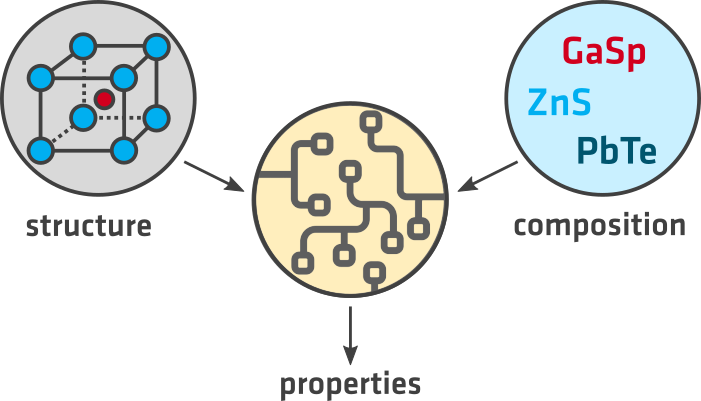Prediction of Materials Properties

Motivation
The design of new materials and the optimization of their properties is central to overcome current global challenges [1]. Our goal at BAM is to discover new materials that make technology more functional, secure, and sustainable. However, the feasible space of materials is far too large to explore it experimentally. Simulations derived from first principles, such as Density Functional Theory (DFT), allow to compute materials properties without the need of expensive and time-consuming experimental synthesis. Although the computational cost of simulations is still far too high for an efficient exploration of the materials space, databases containing simulation results of numerous material types are continuously growing.Machine learning (ML) models trained on existing databases are used as surrogate models in high-throughput screening to guide the search for new materials. They are computationally more efficient than simulations and allow to obtain fast property estimations by which the set of candidates can be narrowed down. As opposed to simulations, which require the exact structure of materials, statistical and ML methods are more flexible and allow to model both the structure-property and composition-property relationships. Working merely with the composition of materials is in many cases preferred, because it eliminates the need to first identify the optimal structure.
Objectives
Although theories of quantum-mechanical systems derived from first principles implicitly contain information about structure-property and composition-property relationships, we do not gain a deeper understanding of these relationships by producing ever larger databases. In the spirit of the saying, “the whole is simpler than the sum of its parts” (J. W. Gibbs), we develop statistical and ML methods to search databases for predictive patterns.These patterns can take on many forms, for instance:
- graphs
- descriptors derived from atomistic structures
- compositional patterns
